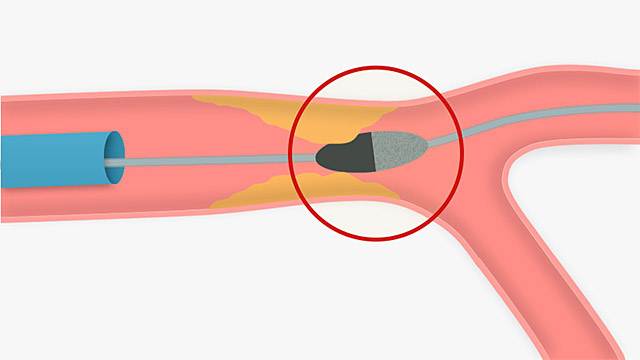
In the rotablator procedure, a catheter is introduced and advanced to the coronary artery over the guide wire cross the stenosis inside the coronary artery. The drill head is used to remove plaque deposits. The guide wire is used to advance a balloon and/or a stent to the site of the stenosis. This rotablator technique is especially useful in patients who have lot of calcium deposited in their heart artery blockages as these calcified blockages are unable to open with plain balloon. Removing calcium from the blockages also helps in positioning and deploying the stent appropriately.
Bhanu Heart Care, the best heart rotablator surgery clinics, hospitals and centers equipped with the best cardiac rotablator doctors, heart rotablator surgeons, cardiac rotablator specialists is reputed for the best cardiac rotablator surgery, rotablator treatment and rotablator services in Nizampet, Miyapur, Chandanagar, Hyderabad.
We have advanced heart rotablator surgery clinics, hospitals and centers equipped with the best cardiac rotablator doctors, heart rotablator surgeons, cardiac rotablator specialists is reputed for the best cardiac rotablator surgery, rotablator treatment and rotablator services in Nizampet, Miyapur, Chandanagar, Hyderabad.
Bhanu Heart Care is a hospital and clinic treatment for rotablator specialist doctor/surgeon services treatment. We have a highly experienced rotablator surgeon specialist who provides comprehensive rotablator hospitals treatment in Miyapur, Chandanagar, Madinaguda and Hyderabad.
Your doctor may feel the particular plaque formation closing off one of your arteries can be managed better using a rotablator procedure (RP).
This procedure is used when:
During this procedure a very small device called a rotablator is used. It is the shape of a tiny football and comes in many sizes to suit various arteries. It is threaded over a guidewire through the catheter that is used to inject dye at the blockage site.
The tip of the rotablator is coated with very tiny pieces of diamond crystals. Air pressure (turbine) is used to power and rotate the tip at very high speeds against the plaque. When the tip is rotated, it sounds much like the tools a dentist might use. Short bursts of power will be used to rotate the tip up to 190,000 rpm. This will grind or break the plaque down into very small particles. These particles are the size of sand dust which are smaller than a red blood cell. The dust is flushed downstream in the blood with IV fluids to be cleaned up and removed by the body’s natural defenses.
The diamond cystal tip will only grind the plaque because it is firmer and more rigid than the soft flexible tissue of the artery itself. This is much like shaving brittle hair off of soft skin.
You may experience some angina during the procedure because the artery is blocked. Be sure to let your doctor know if this occurs. It is common to feel a little sore or bruised inside your chest after an RP. This will go away in a day or two.
Copyright © 2022 Bhanuheartcare. All rights reserved. Build with 

WhatsApp us